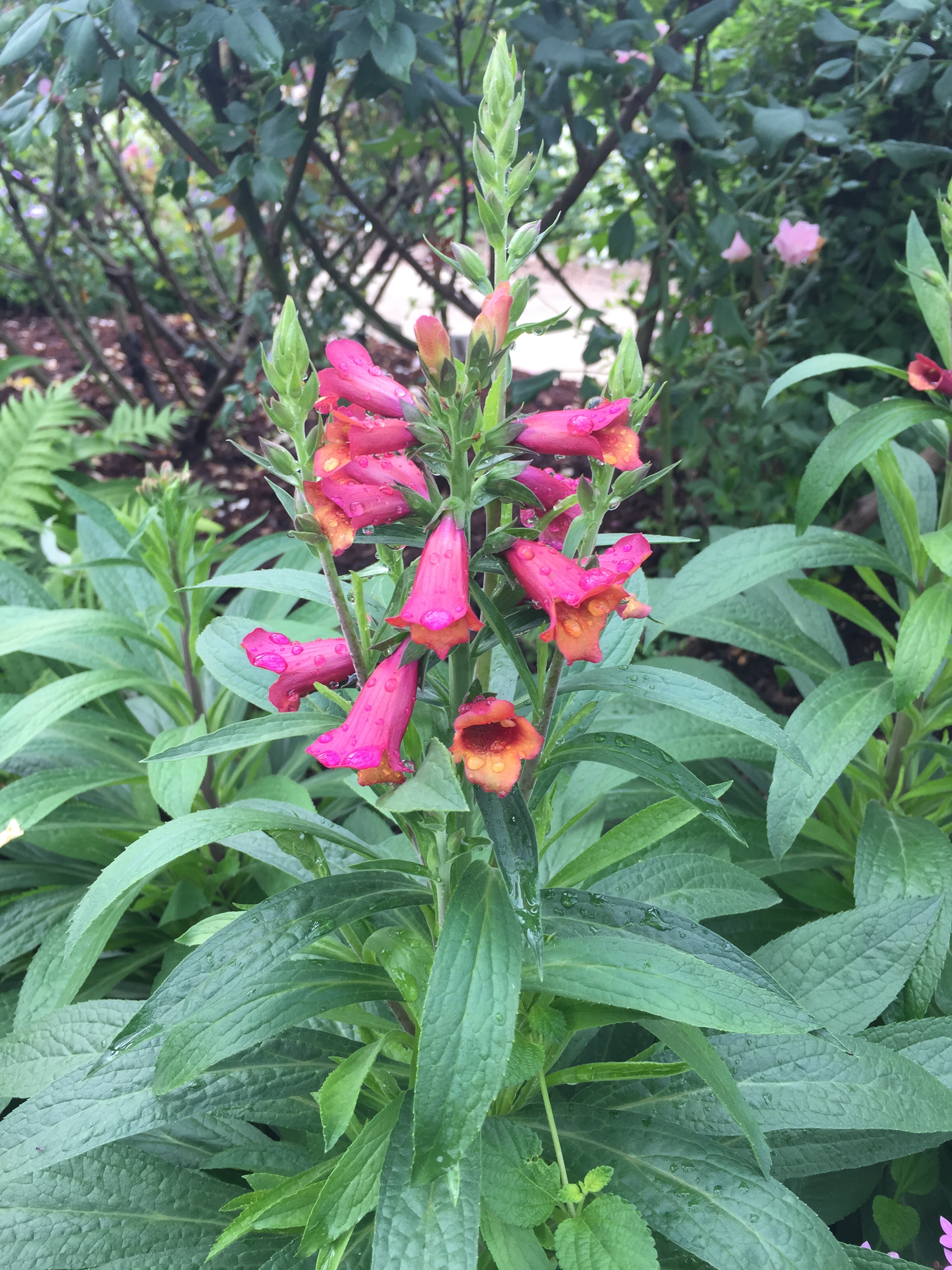Resource Library
Plant of the Week: Digitalis Illumination Foxglove, Digiplexis
Digitalis Illumination Foxglove, Digiplexis -- The white core of this red leafed cabbage shows the dwarfed stem of the plant. Brussels sprouts never had the dwarfed characteristic of cabbage but instead small axillary buds form just above the white side branches in the nodes of the leaves. (Image courtesy Gerald Klingaman)
Download High Resolution
“New and improved” is a mantra as old as the art of advertising. In the plant world, seldom does the hype live up to the claim of being really new or significantly better than earlier renditions, but occasionally something new and different does appear. The Illumination series foxgloves that appeared in the marketplace about 2011 truly are new and exciting additions to the garden border.
Illumination foxgloves (hybrids of Digitalis purpurea and the orange flowered Canary Island foxglove, D. canariensis) are tender perennials of the old snapdragon family that have recently been moved to the plantain family due to DNA analysis. They are herbaceous perennials with the typical basal whorl of rich green leaves, 6-8 inches long, which get smaller as the flowering stems push away from the whorl of leaves in late spring and summer. Plants are 2-3 feet tall when in bloom and sturdier than many foxgloves that often become tipsy as the blooming stems elongate. In mild climate the leaves are evergreen.
The flowers of the Illumination foxgloves are tubular, 2 inches long and borne singly along the blooming scape. ‘Illumination Flame’ has a pink outer color and lip margin with a lighter throat, giving rise the aphorism that it is a foxglove wearing lipstick. ‘Illumination Raspberry’ has a purple-pink blossom with the inner throat a muted orange. In both cases the upper lip of the blossom is enlarged and flowers lack the characteristic lower-lip-dominance of the typical foxglove. Because this is a sterile hybrid seeds do not form and plants remain in bloom during much of the summer. When the initial central leader of the whorl is cut back new blooming stems will emerge from the lower whorls of leaves.
The flowers of the European foxgloves are pollinated by bees, but the Canary Island Foxgloves are bird-pollinated. In bee-pollinated plants the lower lip is usually enlarged and often marked to provide a well-marked and handy landing zone for the bee. In bird-pollinated flowers the upper lip is often enlarged, floral tubes tend to be incised and less tubular, and floral tube marking is not as important. The hybrid flowers show some characteristics of both parents.
The Illumination series foxgloves were developed by Charles Valin, the head breeder for Thompson & Morgan Seed Company. Valin, a Frenchman born in 1979, worked in the horticultural industry in France, Germany and Holland before joining T&M in 2004. Two years later he began working with the Canary Island foxgloves, plants that have been reclassified and renamed so many times during the past two centuries you need a score card to keep track. Recent studies using DNA classify the four species isolated on the Canary Islands as being in the section Isoplexis within the genus Digitalis. The trademarked name Digiplexis is being used in promotions for these plants, but the correct name for the genus, as currently understood, is Digitalis.
The garden world has embraced the Illumination foxgloves through a number of prestigious awards. In 2012, the series received the Best New Plant Award at the Chelsea Flower Show in England, and the Greenhouse Grower’s Award of Excellence in 2013 and the Grand Prize Winner for the American Garden Award in the United States.
Illumination foxgloves are propagated vegitatively using tissue culture and have become quickly available through garden centers. Plants are best in good garden soil in full sun or light shade. Their initial use will probably be in container gardens, but they seem to do equally well in borders and beds. Though touted as being hardy, they will likely be less hardy in our Arkansas climate than the typical foxglove which overwinters about 20 percent of the time. Some sources list it as “hardy” to “zone 8.”
For more information about horticulture or to see other Plant of the Week columns, visit Extension's Web site, www.uaex.uada.edu, or contact your county extension agent. The Cooperative Extension Service is part of the U of A Division of Agriculture.
